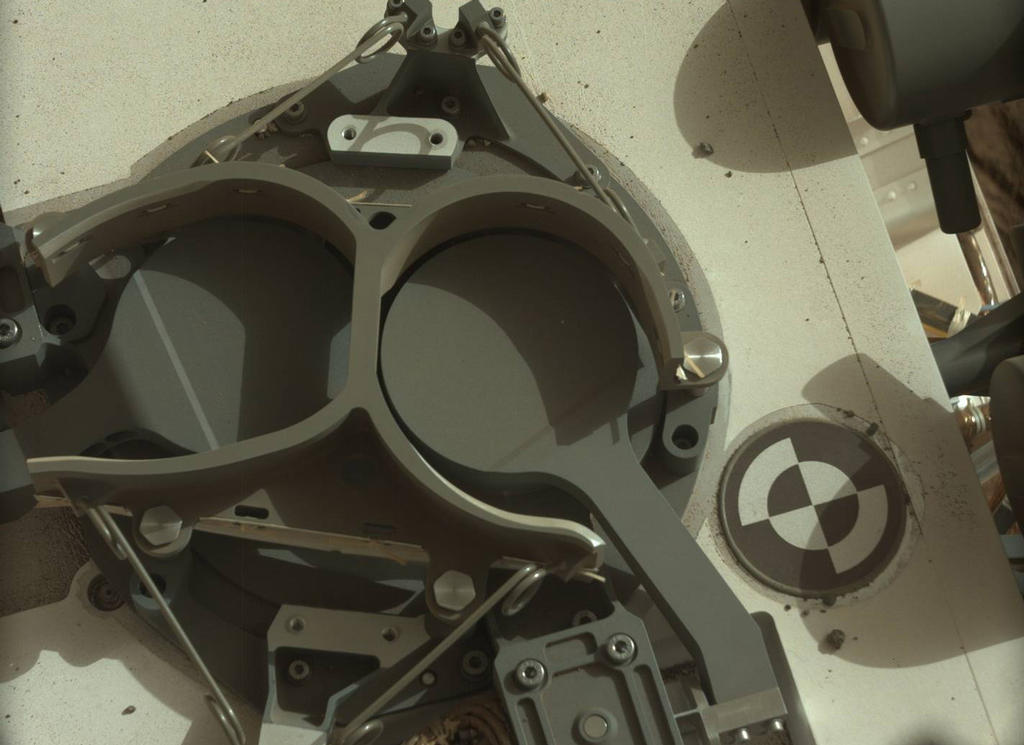After a weekend of medicine I always like to just be a browser once again and browse the social media channels for bits of news on other learning fronts of life. Today 2 things complemented each other so well on Curiosity's mission so far that I decided to dub this post as your Saturday Curiosity Fiesta. Our first treat is yet another of the Jet Propulsion Lab's awesome video updates on Curiosity's progress this past week.
Here is a Mastcam left eye colour image of the contact science target 'Bell Island' mentioned in the video above.
 |
| Bell Island, sol 112 (NASA/JPL/MSSS) |
Now as I recall I had hoped to write a summary on the workings of the SAM instrument aboard the rover. Considering the recent hullabaloo on the instrument's 'history-making' but 'secret' discovery which turned out to be not so sensational as some of us imagined, this is more than relevant to today's fiesta.
 |
| The 2 sample inlets leading into SAM (NASA/JPL/MSSS) |
But Emily Lakdawalla over at the Planetary Society's blog has I think an even better and more thorough account on SAM (its over 4000 words, yikes!). You can read her excellent post
here. That's the second Saturday treat.
Don't forget folks that we have an update on the rover's scientific work coming soon from the AGU's Fall meeting in San Francisco on December 3 at 5pm GMT. You'll be able to listen in via
ustream. And that's your last treat for today.










